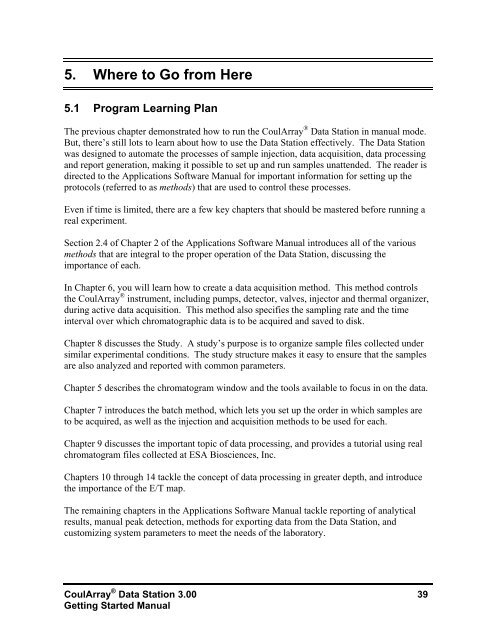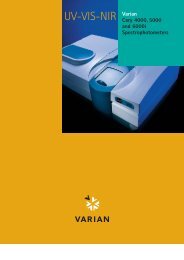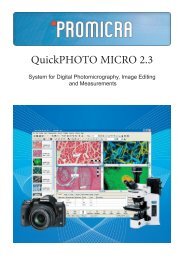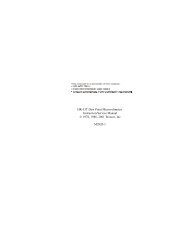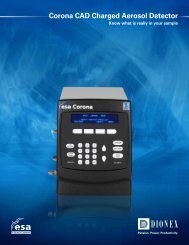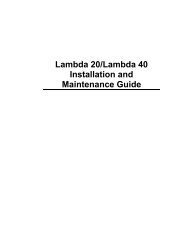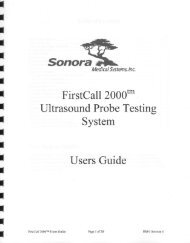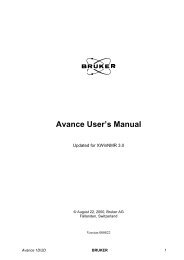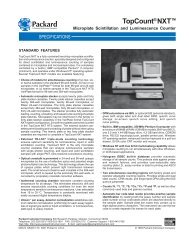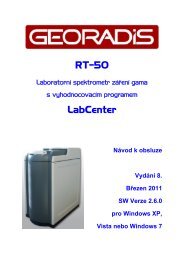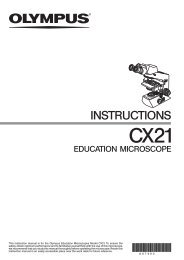70-6676 Getting Started- CoulArray® Data Station V3 - VTP UP
70-6676 Getting Started- CoulArray® Data Station V3 - VTP UP
70-6676 Getting Started- CoulArray® Data Station V3 - VTP UP
You also want an ePaper? Increase the reach of your titles
YUMPU automatically turns print PDFs into web optimized ePapers that Google loves.
5. Where to Go from Here5.1 Program Learning PlanThe previous chapter demonstrated how to run the CoulArray ® <strong>Data</strong> <strong>Station</strong> in manual mode.But, there’s still lots to learn about how to use the <strong>Data</strong> <strong>Station</strong> effectively. The <strong>Data</strong> <strong>Station</strong>was designed to automate the processes of sample injection, data acquisition, data processingand report generation, making it possible to set up and run samples unattended. The reader isdirected to the Applications Software Manual for important information for setting up theprotocols (referred to as methods) that are used to control these processes.Even if time is limited, there are a few key chapters that should be mastered before running areal experiment.Section 2.4 of Chapter 2 of the Applications Software Manual introduces all of the variousmethods that are integral to the proper operation of the <strong>Data</strong> <strong>Station</strong>, discussing theimportance of each.In Chapter 6, you will learn how to create a data acquisition method. This method controlsthe CoulArray ® instrument, including pumps, detector, valves, injector and thermal organizer,during active data acquisition. This method also specifies the sampling rate and the timeinterval over which chromatographic data is to be acquired and saved to disk.Chapter 8 discusses the Study. A study’s purpose is to organize sample files collected undersimilar experimental conditions. The study structure makes it easy to ensure that the samplesare also analyzed and reported with common parameters.Chapter 5 describes the chromatogram window and the tools available to focus in on the data.Chapter 7 introduces the batch method, which lets you set up the order in which samples areto be acquired, as well as the injection and acquisition methods to be used for each.Chapter 9 discusses the important topic of data processing, and provides a tutorial using realchromatogram files collected at ESA Biosciences, Inc.Chapters 10 through 14 tackle the concept of data processing in greater depth, and introducethe importance of the E/T map.The remaining chapters in the Applications Software Manual tackle reporting of analyticalresults, manual peak detection, methods for exporting data from the <strong>Data</strong> <strong>Station</strong>, andcustomizing system parameters to meet the needs of the laboratory.CoulArray ® <strong>Data</strong> <strong>Station</strong> 3.00 39<strong>Getting</strong> <strong>Started</strong> Manual


